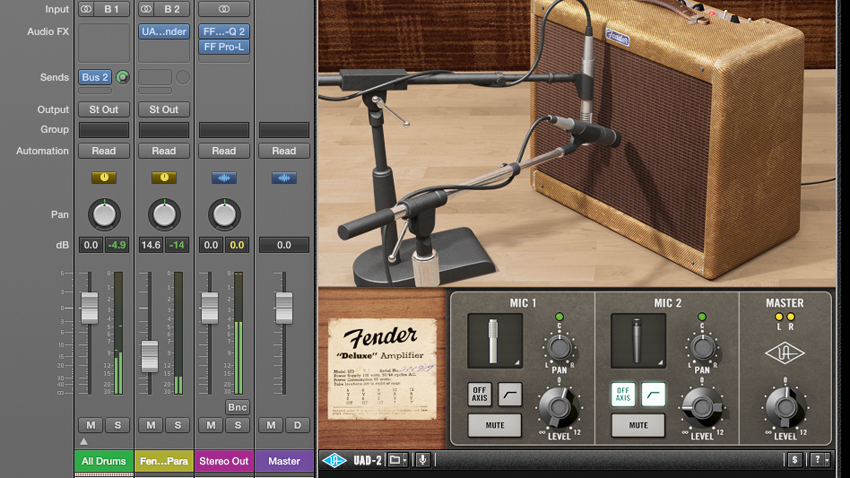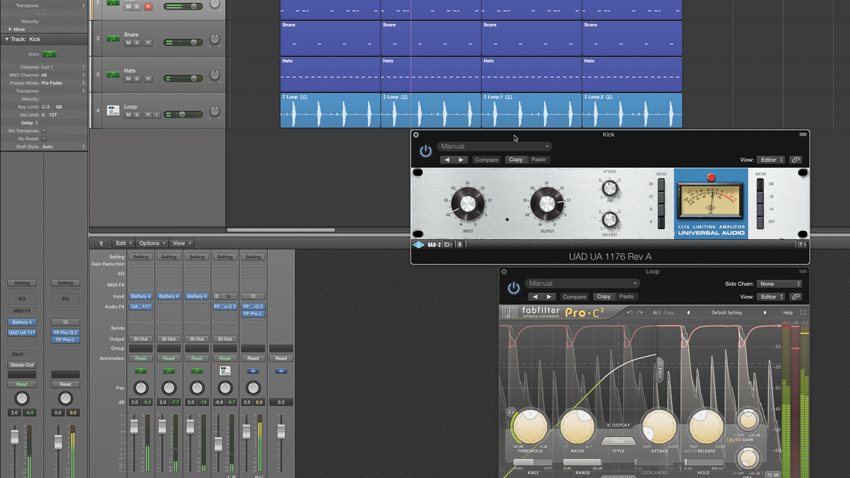How to process drums and bass using a guitar amp sim
Virtual amps can work wonders on programmed beats and synthetic basslines

Adventurous engineers have been using guitar amps and cabinets to add edge and grit to instruments of all kinds – not just guitars – for decades. Today, with so many stellar software amp simulations available to the desktop musician, bringing the fizz and heat of those classic transistors and valves to your productions has never been easier.
In this tutorial, we'll show you to apply virtual amplification to your bass and drum tracks, imbuing them with the kind of power and energy required to keep them at the front of a modern mix.
For more on the subject of amplification, check out the July edition of Future Music.

Step 1: We’re starting with a programmed backing track featuring kick, snare, hi-hats and a loop. We want extra bite in these drums as they’re lacking grit and power right now, despite an 1176 compressor being in place on the kick and the Pro-C 2 compressor processing the loop.

Step 2: We assign all of these sounds to a group, then Insert the UAD Fender 55 Tweed Deluxe Amp plugin as an insert effect. After experimenting with Speaker types, we select the GB25, and choose the Rib(bon)-121 and Dyn(amic)-57 microphones. We tweak the output level to prevent overload.

Step 3: As the amp is inserted over the whole drums bus, it completely dominates the sound. So, instead, we set up an Auxiliary from the drums and move the amp simulation onto it. This enables us to retain the original dry sounds and blend the amp simulation in as a parallel treatment.

Step 4: This works well, but the top end sounds too clashy. We take the hi-hats out of the main drums bus so that they’re no longer sent to the Fender 55. We also adjust Tone in the amp to make it a little less bright.
Get the MusicRadar Newsletter
Want all the hottest music and gear news, reviews, deals, features and more, direct to your inbox? Sign up here.

Step 5: We add a ‘pure’ bassline, using a ‘nearly sine-wave only’ patch from NI Razor. This sits nicely under the kick drum but feels a bit lost with such pure frequency content. It certainly lacks the richness of the beats with their amp simulator treatment.

Step 6: By feeding the bass channel to the amp simulator, we add drive and extra harmonic content, filling up the midrange. We don’t need much send level, and we drop the return channel of the Fender 55 Tweed’s Auxiliary return to reduce its impact a little, too.
Future Music is the number one magazine for today's producers. Packed with technique and technology we'll help you make great new music. All-access artist interviews, in-depth gear reviews, essential production tutorials and much more. Every marvellous monthly edition features reliable reviews of the latest and greatest hardware and software technology and techniques, unparalleled advice, in-depth interviews, sensational free samples and so much more to improve the experience and outcome of your music-making.
“Excels at unique modulated timbres, atonal drones and microtonal sequences that reinvent themselves each time you dare to touch the synth”: Soma Laboratories Lyra-4 review
“A superb-sounding and well thought-out pro-end keyboard”: Roland V-Stage 88 & 76-note keyboards review










